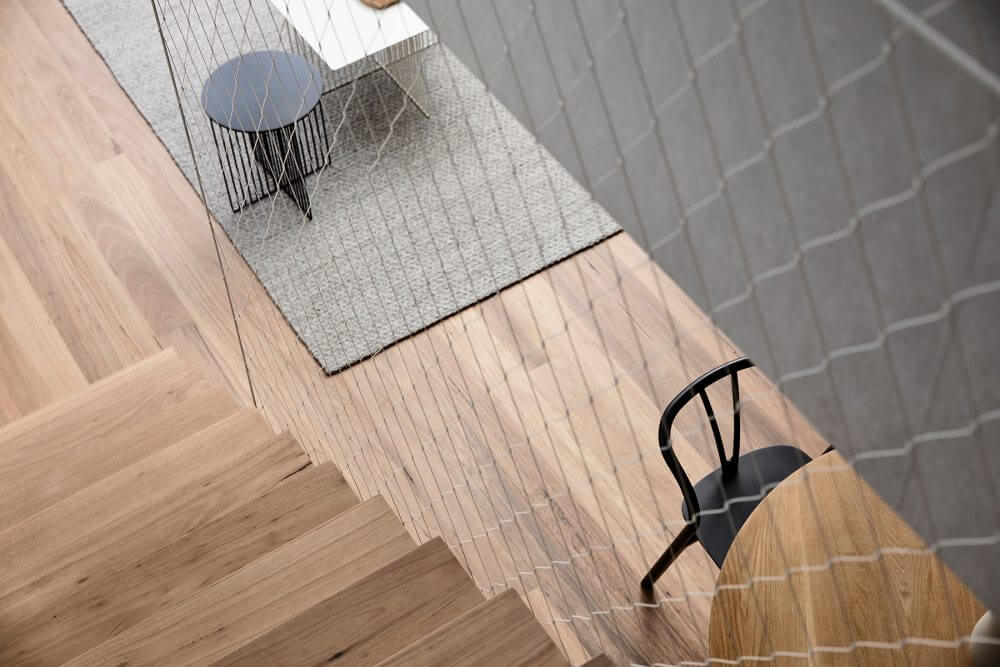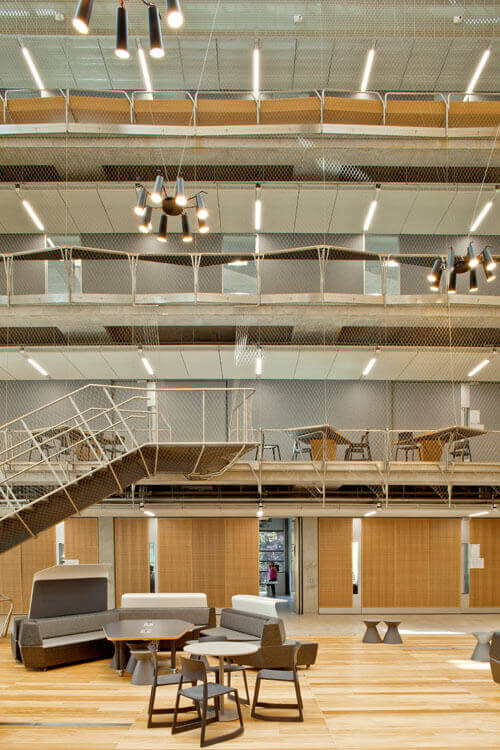When it comes to choosing barrier materials, there are plenty of benefits to be had from using stainless steel for balustrades. And while you may be able to achieve some of these with other materials, it’s the combination of benefits and features that makes stainless steel so unique.
Here’s why.
Features of stainless steel
Stainless steel differs from regular steel in that it has several elements added to it to make it resistant to corrosion. These include chromium and nickel, and in the case of marine-grade stainless steel, molybdenum.
These elements make it different from galvanised steel, which is just coated in zinc to improve its corrosion-resistance. Chainlink and Weldmesh are both generally made from galvanised steel.
Long-lasting and low-maintenance balustrades can be formed from marine-grade stainless steel products like Jakob’s wire rope and Webnet mesh. These products are remarkably versatile and offer many benefits for balustrade use.

Benefits of stainless steel for balustrades
1. Strength and durability
Stainless steel is superior when it comes to longevity. For example, Jakob Webnet can last for as much as 25 years as a barrier material, with very little intervention along the way.
This compares favourably with other materials such as glass (five to 10 years), steel (10 years), Chainlink (one-year warranty), timber (one to five years) and Weldmesh (10 years).
2. Flexibility
Wire rope cables and Webnet are remarkably flexible. Webnet even has fabric-like qualities that enable it to conform to irregular shapes, making it ideal for designs that are outside the box. This sets it apart from most other balustrade materials, which tend to be more rigid.
Webnet mesh might look similar to Chainlink at first glance, but the two are very different. Webnet is formed from interlocking woven wires that can be tensioned to the load requirements of the project, including large crowd loads. Chainlink on the other hand is made up of bent wires that hook loosely together, and the material is far more rigid than Webnet. This is why Chainlink tends to be restricted to fencing rather than balustrades.
3. Aesthetics
Balustrade materials vary in terms of aesthetics. Steel tends to look harsh and industrial, glass can look sleek and modern, and Weldmesh looks more functional than aesthetically pleasing.
Webnet’s near-transparency however gives it a filigree-like appearance that enables it to integrate well with architectural design. It can also be coloured to suit the design and used to support additional elements such as climbing plants or decorative panels.
4. Span and size
Both Webnet and Tensile wire rope come in a wide range of sizes and configurations. They can also accommodate very large spans, including over multiple levels. Most other balustrade materials lack this capability.
Uses of stainless steel in balustrades
Stainless steel balustrade products are adaptable to a wide range of projects, such as:
- Staircases – for example the twisting spiral staircase at the RFW Children’s Charity in Manly, and the near-invisible balustrades at Carlton House.
- Footbridges – Webnet can be used for both fall protection and anti-throw screens on footbridges. Examples include Lachlan’s Line and Elizabeth Quay
- Central atriums – both vertical cables and Webnet can be used successfully as atrium barriers in educational and public buildings, such as at the Melbourne Music Conservatorium and the Melbourne School of Design.
Feel free to get in touch to find out more about stainless steel balustrades or to discuss your project idea.






































